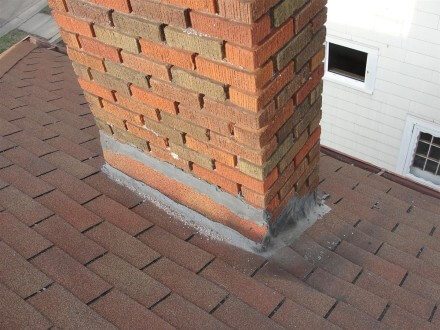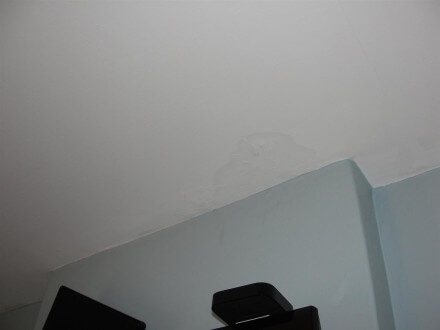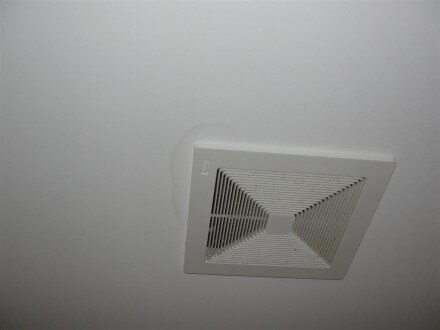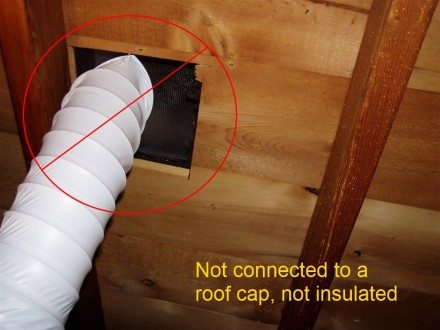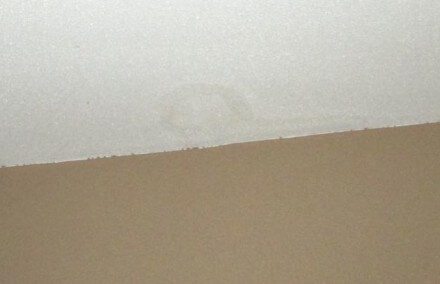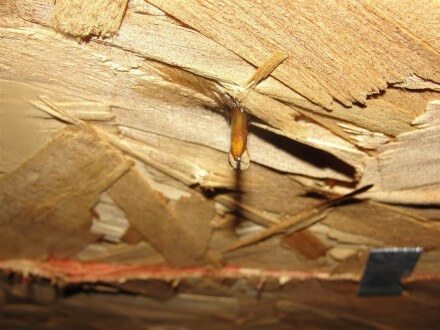One of the most common home inspection concerns for home buyers is ceiling stains. While it’s not always possible to determine exactly what caused a ceiling stain, the location of the stain will often give away what caused the stain. For example, the photos below show an improperly flashed chimney at a home in Saint Paul, and a corresponding stain at the ceiling in the bedroom directly below.
The most obvious concern with ceiling stains is roof leakage. When a home inspector finds a suspicious ceiling stain, they’ll typically use a moisture meter to help determine whether it’s an active leak or not. The video clip below shows me using the non-invasive feature of a moisture meter to confirm that the ceiling stain shown above was caused by active leaking.
If a stain is wet, most home inspectors will be able to trace down the source of the moisture and recommend a repair. When a stain is dry, it means the cause of the staining has been corrected or the conditions that caused the staining to occur are no longer present. In these cases, it’s a good idea to ask the seller about the history of the staining; specifically, what caused the staining and has the cause of the staining been corrected?
There are a number of other types of ceiling stains that are quite easily identified.
Stains below bathroom exhaust fans
This is one of the most common ceiling stains you’ll find in Minnesota, and it’s caused by condensation. When a bathroom exhaust fan is connected to an un-insulated duct that runs through the attic space and doesn’t make an airtight connection to a proper roof cap, the moisture that’s supposed to exhaust to the exterior is going to condense like crazy.
I know I’ve shared this photo below, but I have to share it again. The duct pictured below was completely filled with condensate in the attic. I set my flashlight behind the duct to take this photo showing how full of water it was.
As all of this moisture condenses inside the duct, it eventually drains down to the bottom of the duct and then leaks on the ceiling next to the fan. Boom. Ceiling stain.
The fix for this condition is to make sure the duct for the bathroom exhaust fan is properly installed; this means an insulated duct, a short run, and airtight connections.
Stains at outside wall/ceiling corners
When stains appear at the ceilings along outside walls at the corners, it’s typically the result of ice dam leakage. If the insulation in the attic is insufficient and there are attic air leaks, it’s very likely that ice dams caused the leaking.
In these cases, our recommendation is often to have the attic air leaks sealed and more insulation added to the attic. This is typically what it takes to prevent roof leakage from ice dams.
Random ceiling stains, no roof leaks
Condensation that occurs in the attic is a common cause of ceiling stains. When enough frost builds up in the attic, it can leave enough water when it melts to create stains in a bunch of random places.
To help determine if an attic experiences condensation problems, take a close look at the nail heads; if they’re rusty and there are stains on the roof sheathing around nail heads, it’s a condensation issue. The fix for this is to seal attic air leaks and reduce indoor humidity levels.
Stains below plumbing fixtures or radiators
These are both pretty obvious, right? When a home inspector finds a stain below a plumbing fixture, the next step is to use a moisture meter to see if there is active leaking. If the stain is dry, the plumbing fixture above should be thoroughly tested, and then the stain should be checked again.
This list makes up the vast majority of ceiling stains that we encounter during home inspections. Stains on ceilings are definitely worth further investigation, but most of the time they’re only indicators of past leaks, many of which occured a long time ago. Why? Because active leaks will quickly destroy ceilings and they’re extremely difficult to hide.
Author: Reuben Saltzman, Structure Tech Home Inspections

